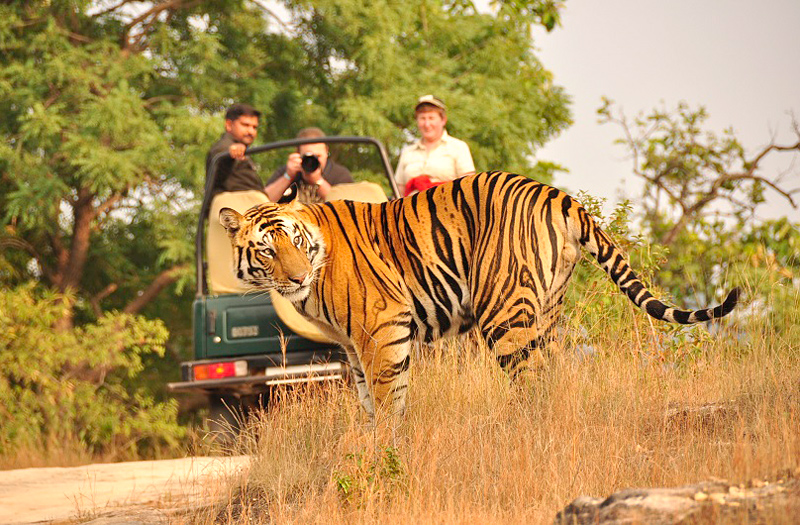Jim Corbett National Park, India’s oldest and most renowned wildlife sanctuary, is a paradise for tiger enthusiasts. Known for its thriving population of majestic Bengal tigers, the park offers wildlife enthusiasts a thrilling opportunity to witness these magnificent creatures in their natural habitat. However, to maximize your chances of spotting a tiger, visiting during the right season is essential.
Here’s a detailed guide to help you plan your trip for the best tiger-sighting experience:

Best Time to See Tigers: Summer Season (March to June)
Why Summer is the Best Season for Tiger Sightings
- Increased Visibility: During summer, the vegetation becomes sparse, making it easier to spot tigers and other wildlife.
- Frequent Visits to Waterholes: The scorching heat drives tigers and other animals to visit waterholes more frequently, providing ample opportunities for sightings.
- Open Zones: All major zones, including Dhikala, Bijrani, and Jhirna, remain open and accessible, increasing your chances of tiger encounters.
Tiger Activity During Summer
- Tigers are often seen relaxing near water bodies, especially during the hot afternoons.
- Early morning and late evening safaris are ideal times for spotting tigers as they are most active during these cooler hours.
Temperature:
- Daytime temperatures range from 30°C to 40°C, so prepare for the heat with lightweight clothing, sunscreen, and plenty of water.
Other Seasons for Tiger Sightings
Winter Season (October to February)
While summer remains the best time, winter also offers decent chances of spotting tigers:
- Cooler Weather: The comfortable climate attracts a large number of visitors, but this also makes safaris more crowded.
- Tiger Sightings: Tigers can still be spotted, especially in the Dhikala and Bijrani zones, but they are less active during the colder parts of the day.
Pro Tip: Opt for mid-morning or afternoon safaris when the sun is out, as tigers are more likely to be seen during these times.
Monsoon Season (July to September)
Monsoon is generally not ideal for tiger sightings due to several reasons:
- Limited Access: Most zones, except the Jhirna Zone, remain closed for safety reasons.
- Dense Vegetation: The lush greenery makes it difficult to spot tigers.
- Low Activity: Tigers tend to stay hidden during heavy rainfall.
However, the monsoon season is perfect for experiencing the park’s breathtaking natural beauty and enjoying solitude.
Top Zones for Tiger Sightings in Jim Corbett
- Dhikala Zone: Known as the best zone for tiger sightings, it offers a mix of grasslands and dense forests that are ideal tiger habitats.
- Bijrani Zone: Famous for its open grasslands, this zone provides excellent visibility for spotting wildlife, including tigers.
- Jhirna Zone: Open throughout the year, this zone is a good option during the monsoon season.
- Durga Devi Zone: Known for its rugged terrain and dense forests, this zone is a tiger-lover’s dream.
Tips to Maximize Your Chances of Spotting Tigers
- Choose Early Morning or Late Evening Safaris: These are the times when tigers are most active.
- Opt for Experienced Guides: A skilled guide knows the tiger trails and behaviors, significantly increasing your chances of a sighting.
- Stay Patient and Alert: Spotting a tiger often requires time and focus. Keep your eyes on watering holes and shaded areas.
- Book in Advance: Popular zones like Dhikala and Bijrani get fully booked quickly during peak seasons.
Conclusion
The best time to see tigers in Jim Corbett National Park is during the summer season, from March to June, when their activity around water sources peaks. While winter also offers good opportunities, the lush greenery of monsoon may limit sightings. Plan your visit with patience and preparation, and you’ll enhance your chances of experiencing the thrill of spotting the majestic Bengal tiger in its natural habitat.
